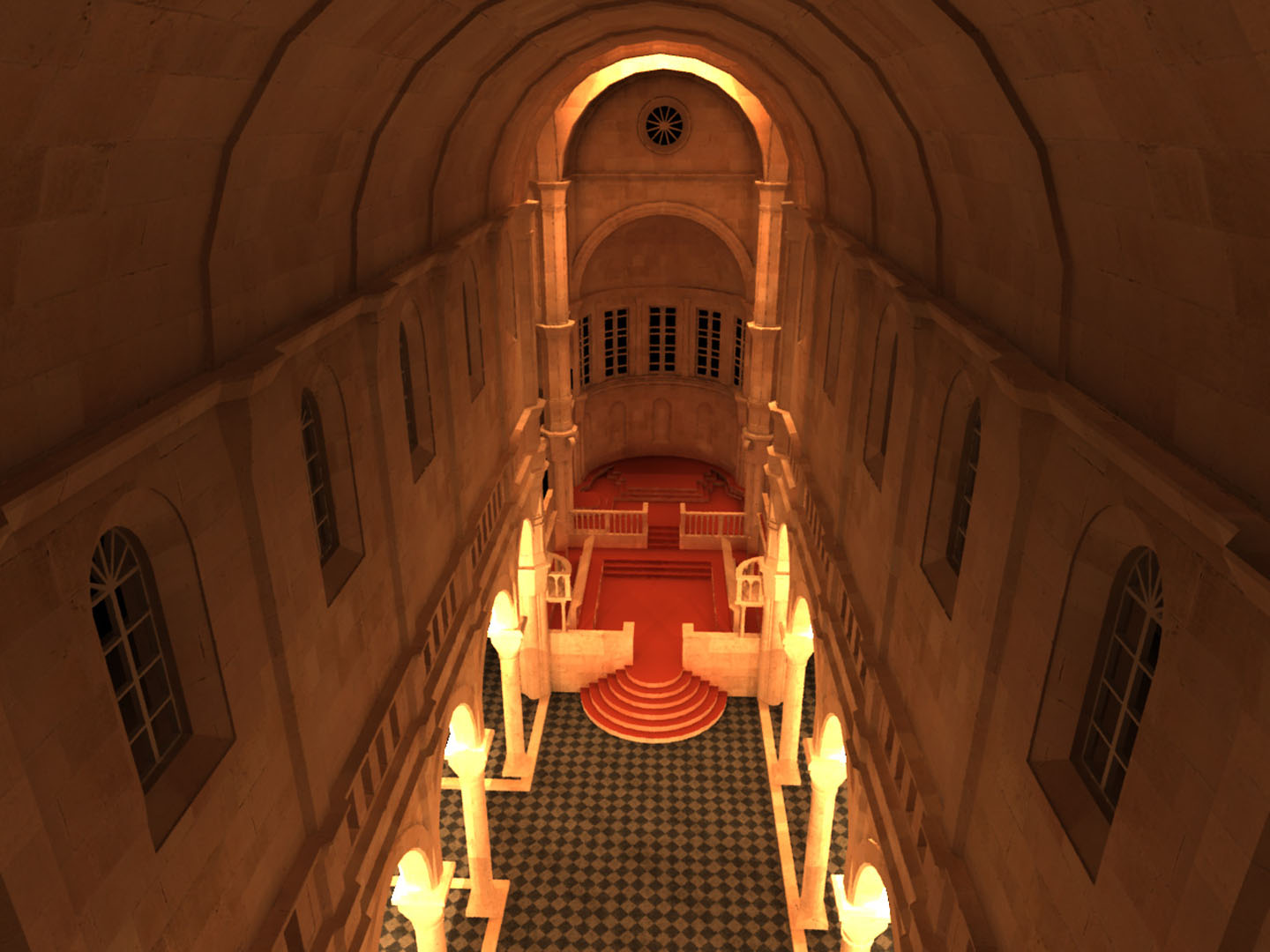“Fast and detailed approximate global illumination by irradiance decomposition” by Arikan, Forsyth and O’Brien
Conference:
Type(s):
Title:
- Fast and detailed approximate global illumination by irradiance decomposition
Presenter(s)/Author(s):
Abstract:
In this paper we present an approximate method for accelerated computation of the final gathering step in a global illumination algorithm. Our method operates by decomposing the radiance field close to surfaces into separate far- and near-field components that can be approximated individually. By computing surface shading using these approximations, instead of directly querying the global illumination solution, we have been able to obtain rendering time speed ups on the order of 10x compared to previous acceleration methods. Our approximation schemes rely mainly on the assumptions that radiance due to distant objects will exhibit low spatial and angular variation, and that the visibility between a surface and nearby surfaces can be reasonably predicted by simple location and orientation-based heuristics. Motivated by these assumptions, our far-field scheme uses scattered-data interpolation with spherical harmonics to represent spatial and angular variation, and our near-field scheme employs an aggressively simple visibility heuristic. For our test scenes, the errors introduced when our assumptions fail do not result in visually objectionable artifacts or easily noticeable deviation from a ground-truth solution. We also discuss how our near-field approximation can be used with standard local illumination algorithms to produce significantly improved images at only negligible additional cost.
References:
1. Atkinson, K. E. 2000. The planar radiosity equation and its numerical solution. IMA Journal of Numerical Analysis 20, 303–332.Google ScholarCross Ref
2. Basri, R., and Jacobs, D. 2000. Lambertian reflectance and linear subspaces. Tech. Rep. MCS00-21, 2000-172R, Waizmann Instritude of Science, NEC Research Institude. Google ScholarDigital Library
3. Bekaert, P., Dutre, P., and Willems, Y. D. 1998. Final radiosity gather step using a monte carlo technique with optimal importance sampling. Tech. Rep. CW275.Google Scholar
4. Dutré, P., Bekaert, P., and Bala, K. 2003. Advanced Global Illumination. A. K. Peters Ltd. Google ScholarDigital Library
5. Epstein, R., Hallinan, P. W., and Yuille, A. L. 1995. 5 ± 2 eigenimages suffice: An empirical investigation of low-dimensional lighting models. In IEEE workshop on physics-based modeling in computer vision, 108–116.Google Scholar
6. Gautron. P. Krivanek, J., Pattanaik, S., and Bouatouch, K. 2004. A novel hemispherical basis for accurate and efficient rendering. In Rendering Techniques 2004: 15th Eurographics Workshop on Rendering, 321–330. Google ScholarDigital Library
7. Greger. G. Shirley, P. Hubbard, P. M., and Greenberg, D. P. 1998. The irradiance volume. IEEE Comput. Graph. Appl. 18. 2. 32–43. Google ScholarDigital Library
8. Hottel, H. C., and Saforim. A. F. 1967. Radiative Transfer. McGraw Inc.Google Scholar
9. Jensen, H. W. 2001. Realistic Image Synthesis Using Photon Mapping. A. K. Peters, Natick. MA. Google ScholarDigital Library
10. Krivanek, J., Gautron. P., Pattanaik, S., and Bouatouch, K. 2005. Radiance caching for efficient global illumination computation. In IEEE Transacations of Visualization and Comptuer Graphics. Google ScholarDigital Library
11. Lischinski, D., Tampieri. F. and Greenberg, D. P. 1993. Combining hierarchical radiosity and discontinuity meshing. Computer Graphics 27, Annual Conference Series, 199–208. Google ScholarDigital Library
12. Ramamoorthi, R., and Hanrahan, P. 2001. An efficient representation for irradiance environment maps. In SIGGRAPH 2001, Computer Graphics Proceedings, 497–500. Google ScholarDigital Library
13. Ramamoorthi. R., and Hanrahan, P. 2001. The relationship between radiance and irradiance: Determining the illumination from images of a convex lambertian object. In Journal of the Optical Society of America.Google Scholar
14. Rathsfeld, A. 1999. Edge asymptotics for the radiosity equation over polyhedral boundaries. Mathematical Methods in the Applied Sciences 22, 3, 217–241.Google ScholarCross Ref
15. Rushmeier, H. E., Patterson, C., and Veerasamy, A. 1993. Geometric simplification for indirect illumination calculations. In Graphics Interface.Google Scholar
16. Rushmeier, H. E. 1988. Realistic Image Synthesis for Scenes with Radiatively Participating Media. Ph. D. thesis. Google ScholarDigital Library
17. Scheel, A., Stamminger, M., and Seidel, H. 2001. Thrifty final gather for radiosity. In Rendering Techniques 2001 (Proc. of Eurographics Workshop on Rendering 2001), Eurographics. Google ScholarDigital Library
18. Scheel, A., Stamminger, M., and Seidel, H. P. 2002. Grid based final gather for radiosity on complex scenes. In EUROGRAPHICS 2002, 547–555.Google Scholar
19. Sillion, F., and Puech, C. 1994. Radiosity and Global Illumination. Morgan Kaufmann, San Francisco, CA. Google ScholarDigital Library
20. Sloan, P. P., Kautz, J., and Snyder, J. 2002. Precomputed radiance transfer for real-time rendering in dynamic, low-frequency lighting environments. In SIGGRAPH 2002, Computer Graphics Proceedings, 527–536. Google ScholarDigital Library
21. Tabellion, E., and Lamorlette, A. 2004. An approximate global illumination system for computer generated films. In SIGGRAPH 2004. Computer Graphics Proceedings. Google ScholarDigital Library
22. Ward, G. J., and Heckbert, P. 1992. Irradiance Gradients. In Third Eurographics Workshop on Rendering, 85–98.Google Scholar
23. Ward, G., Rubinstein, F., and Clear, R. 1988. A ray tracing solution for diffuse interreflectio. In SIGGRAPH 1988, Computer Graphics Proceedings. Google ScholarDigital Library
24. Zimmerman, K., and Shirley, P. 1995. A Two-Pass Realistic Image Synthesis Method for Complex Scenes. In Rendering Techniques ’95 (Proceedings of the Sixth Eurographics Workshop on Rendering), 284–295.Google Scholar





